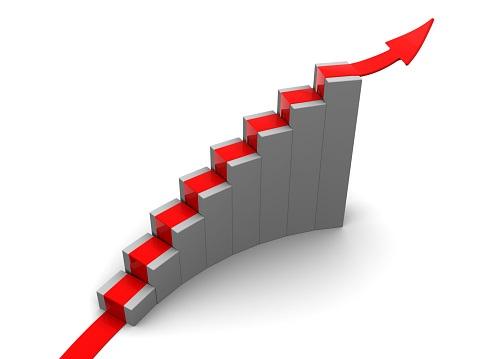President/CEO
- FMA
- The Fabricator
- FABTECH
- Canadian Metalworking
Categories
- Additive Manufacturing
- Aluminum Welding
- Arc Welding
- Assembly and Joining
- Automation and Robotics
- Bending and Forming
- Consumables
- Cutting and Weld Prep
- Electric Vehicles
- En Español
- Finishing
- Hydroforming
- Laser Cutting
- Laser Welding
- Machining
- Manufacturing Software
- Materials Handling
- Metals/Materials
- Oxyfuel Cutting
- Plasma Cutting
- Power Tools
- Punching and Other Holemaking
- Roll Forming
- Safety
- Sawing
- Shearing
- Shop Management
- Testing and Measuring
- Tube and Pipe Fabrication
- Tube and Pipe Production
- Waterjet Cutting
Industry Directory
Webcasts
Podcasts
FAB 40
Advertise
Subscribe
Account Login
Search
Is it time to get used to rising domestic steel prices?
The DOC’s recent Vietnam circumvention ruling could work against steel buyers
- By John Packard and Tim Triplett
- December 14, 2017

Given recent trade penalties applied against Chinese steel and the potential for more, domestic steel buyers are likely facing a year marked by rising steel prices.
In a democratic society, government regulators are not supposed to pick winners and losers. But two decisions coming out of Washington have the potential to further curtail steel imports and raise the prices that manufacturers and fabricators in the U.S. must pay for their raw materials.
On Dec. 5 the U.S. Department of Commerce (DOC) imposed duties on cold-rolled and corrosion-resistant (CORE) steel products from Vietnam, siding with U.S. steel producers taht claim the Chinese have rerouted steel through Vietnam to evade U.S. duties imposed on Chinese steel products in 2016. The Vietnamese admit they have sometimes used hot roll produced in China, but claim that by cold rolling and galvanizing it, they have “substantially transformed” the substrate, which changes its country of origin to Vietnam.
The DOC’s Vietnam circumvention ruling represents a departure in the U.S. government’s interpretation of what constitutes adding “substantial” value to a product and what is considered a “minor and insignificant” change. This is a key issue in determining whether importation of a product from a country not directly subject to a trade remedy amounts to a “circumvention” of existing trade orders, according to Washington trade attorney Lewis Leibowitz.
“It had been widely expected that Commerce would reach out to penalize imports of steel products from Vietnam. However, it remains to be decided whether the ruling is consistent with U.S. law or trade agreements,” Leibowitz said.
Leibowitz has taken issue with the ruling, which is based on the premise that the value-added in cold rolling and coating steel in Vietnam is “minor and insignificant.” In fact, in the case of CORE steel made from Chinese hot-rolled substrate, the product has undergone not one but two significant changes—cold rolling and covering with a corrosion-resistant coating.
“The Chinese product has been ‘substantially transformed’ in Vietnam, either once or twice, making the finished product undeniably a product of Vietnam, not China,” he argues. “Commerce ignored their previous jurisprudence on ‘substantial transformation’ to reach a result that looks out of phase with international trade norms. This could have widespread implications for other cases and other countries that process steel from China and elsewhere.”
As a result of the preliminary DOC ruling, Customs and Border Protection (CBP) will begin collecting cash deposits on imports of CORE produced in Vietnam using Chinese-origin substrate at antidumping (AD) rates of 199.43 percent and countervailing duty (CVD) rates of 39.05 percent. CBP also will collect AD and CVD cash deposits on imports of cold-rolled steel produced in Vietnam using Chinese-origin substrate at rates of 265.79 percent and 256.44 percent, respectively. Duties will apply retroactively to shipments entering the U.S. on or after Nov. 4, 2016. As a practical matter, steelmakers in Vietnam will no longer be able to ship products that originated in China to the U.S.
The decision was a victory for U.S. steelmakers, which won trade penalties against Chinese steel in 2015 and 2016 only to see a spike in shipments from other countries. Shipments of corrosion-resistant steel from Vietnam to the U.S. increased from $2 million to $80 million shortly after the preliminary duties were imposed on Chinese products. Likewise, shipments of cold-rolled steel from Vietnam jumped to $215 million from just $9 million after Chinese products were hit with duties.
Not surprisingly, domestic steelmakers applauded the Commerce ruling. Speaking for its mill members, the American Iron and Steel Institute stated: “We are very pleased with the Department of Commerce’s announcement of its preliminary affirmative rulings that certain types of steel products from Vietnam, which originated in China, circumvent existing antidumping and countervailing duty orders. Subsidies and other interventionist foreign government policies have led to record-high levels of dumped and subsidized imports into the U.S. market, causing severe economic harm and significant job losses. We look forward to the final determination in this case early next year. Continued aggressive enforcement of the full range of U.S. trade laws, including Section 232 and our antidumping and countervailing duty laws, is critical to ensure that the U.S. industry is not further damaged by unfair trade in steel.”
For opponents, the DOC ruling in the Vietnam circumvention case sets a disturbing precedent and raises a number of questions. If the extensive process to convert hot roll to cold roll and galvanized does not constitute a substantial transformation, then what does? What exactly are the rules? If an importer cannot prove its steel originated from a country with no standing AD/CVD orders in the U.S., must it pay duties anyway? And if hot roll converted to cold roll isn’t a significant transformation, what about hot roll converted to line pipe or some other product? The potential impact on steel imports seems open-ended. As one distributor observed, “I think this ruling may be bigger and more expensive for the U.S. steel-buying market than people realize.”
Added Leibowitz, “There are a number of unresolved issues surrounding this preliminary determination. For importers of cold-rolled and CORE steel from Vietnam, the uncertainty continues at least until mid-February when Commerce is scheduled to issue a final circumvention determination.”
Section 232 Decision Must Come Soon
Like the circumvention case, the Trump administration’s long-delayed Section 232 decision has the potential to disrupt the supply chain and raise steel pricing by further limiting imports into the U.S.
The Trump administration proposed Section 232 way back in the spring as a way to place new tariffs or quotas on steel imports, ostensibly because they threaten the viability of the U.S. steel industry, which is essential to the national security. The proposal proved highly unpopular outside the steel community, especially among the many steel-consuming sectors that rely heavily on imported steel. Backpedaling on its original June deadline, the administration said it must put Section 232 on the back burner while it focused on repealing Obamacare, and then later tax reform. But the issue can only simmer for a few more weeks before Trump must act or get the pot off the stove. The deadline for delivery of the DOC’s report to the president, and his signature, is in mid-January.
Meanwhile, Trump has been taking heat from both sides. Supporters of Section 232 note that the administration’s indecision has actually made imports worse as traders scramble to ship to the U.S. ahead of possible new sanctions. Opponents say Section 232 could lead to economic disaster for the steel supply chain, ports, and agriculture industry if new U.S. tariffs and quotas lead to trade retaliation by other countries.
There’s been no definitive signal from the administration on what Trump will do. What was once widely viewed as a slam dunk for the American steel industry (Commerce Secretary Wilbur Ross is a former steel executive) is now anyone’s guess.
Flat-Rolled and Plate Steel Mills Raise Prices
The domestic steel mills announced new price increases the week of Dec. 4. The steel plate mills were the first to go, adding an additional $50/ton ($2.50/cwt) to the base price of plate steel. By the end of the week, just about all of the flat-rolled steel mills had made announcements on hot-rolled, cold-rolled, galvanized, and Galvalume steels.
Led by Nucor, the sheet mills raised prices by $30/ton ($1.50/cwt). ArcelorMittal USA separated itself from the pack by defining what its minimum base prices would be by product. AMUSA told its customers that hot-rolled base pricing was $680/ton ($34.00/cwt), while cold-rolled and coated steels were referenced as starting at $860/ton ($43.00/cwt).
As of Dec. 12, Steel Market Update was reporting in its newsletters and on its website that prices were moving higher and were expected to continue to do so over the next 30 to 60 days.
You can find out more about Steel Market Update and its market information, training, and conference products at www.steelmarketupdate.com.
subscribe now

The Fabricator is North America's leading magazine for the metal forming and fabricating industry. The magazine delivers the news, technical articles, and case histories that enable fabricators to do their jobs more efficiently. The Fabricator has served the industry since 1970.
start your free subscriptionAbout the Authors

John Packard
800-432-3475
John Packard is the founder and publisher of Steel Market Update, a steel industry newsletter and website dedicated to the flat-rolled steel industry in North America. He spent the first 31 years of his career selling flat-rolled steel products to the manufacturing and distribution communities.

Tim Triplett
Executive Editor
- Stay connected from anywhere

Easily access valuable industry resources now with full access to the digital edition of The Fabricator.

Easily access valuable industry resources now with full access to the digital edition of The Welder.

Easily access valuable industry resources now with full access to the digital edition of The Tube and Pipe Journal.
- Podcasting
- Podcast:
- The Fabricator Podcast
- Published:
- 04/16/2024
- Running Time:
- 63:29
In this episode of The Fabricator Podcast, Caleb Chamberlain, co-founder and CEO of OSH Cut, discusses his company’s...
- Trending Articles
Tips for creating sheet metal tubes with perforations

JM Steel triples capacity for solar energy projects at Pennsylvania facility

Are two heads better than one in fiber laser cutting?

Supporting the metal fabricating industry through FMA

Omco Solar opens second Alabama manufacturing facility

- Industry Events
16th Annual Safety Conference
- April 30 - May 1, 2024
- Elgin,
Pipe and Tube Conference
- May 21 - 22, 2024
- Omaha, NE
World-Class Roll Forming Workshop
- June 5 - 6, 2024
- Louisville, KY
Advanced Laser Application Workshop
- June 25 - 27, 2024
- Novi, MI


























